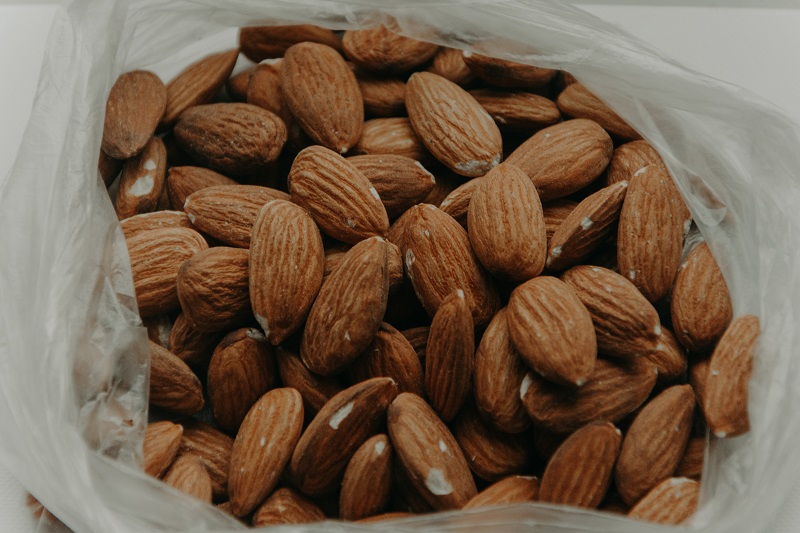Smart Tactics To Mitigate Codling Moth in Tree Fruit Orchards

Codling moth can look benign,but do serious damage. Spraying every other row might not be the best approach to mitigating codling moth, according to Wilbur-Ellis Horticulturist Mike Doerr. (Photo: UC Statewide IPM Project)
For every bin pile that produces codling moth, there is possibly a tree fruit grower that should have known better.
“How many codling moth can come out of a bin pile? I assume that everybody is aware of that,” Mike Doerr says. “But we still chase it every year that we have damage around bin piles. And we need to address that.”
Actually, Brad Higbee, a former USDA Entomologist, did exactly that in Yakima, WA.
“But that work was done in the early 1990s,” Doerr says, “and sometimes that data gets lost.”
For anyone still in the dark, a significant number of codling moth can come out of a bin pile, Doerr answers.
“And it’s never on schedule with what the degree-day model would suggest,” he adds. “They come out at weird times when we’re not expecting them, usually in the middle of the summertime, when codling moth is generally at a lower point in the season.”
Doerr, representing Wilbur- Ellis, participated in a retailer/distributor panel discussion of codling moth at the North Central Washington Tree Fruit Days in Wenatchee, WA. Joining him were Justin Wiggs of Chamberlin Agriculture and Chuck Weaver of GS Long.
The bin dilemma is often overlooked, Wiggs says. “I have had orchards that bring in their bins in the middle of June, pretty early compared to when they’ll harvest, and ‘the codling moth looks fine, the codling moth looks fine,’ and then, ‘Boom!’ the population explodes,” he says.
Equally disastrous, Wiggs says, is overlooking pollinizers after grafting over a block.
“I don’t have apples on these trees, so I don’t need to spray this block,” Wiggs says. “And those pollinizers can become a source for codling moth. Especially if you have blocks that are producing next to those blocks, it can turn into a nightmare situation if you’re not at least bagging that fruit or spraying that fruit when you’re spraying the rest of the orchard.”
Sprayer Efficiency
Doerr questions the use of electrostatic sprayers and their potential to reduce volumes while driving faster. He prefers sprayers that travel less than 3 mph, preferably 2½ mph, even on smaller plantings.
“It all feels good at the time, but there’s very little insect efficacy data associated with that,” he says. “What we see with codling moth — and this might be codling moth-specific and not as much around foliar nutrients, maybe not even as much around disease — but when it comes to codling moth, the really small droplets, the really low-water volume, and the fast-driving sprayers, you see a decrease in the residual control of the product. You might be able to get 17 days out of a good application, but you might be getting seven to 10 days out of a compromised application. I think the savings on pest control will outweigh the cost of driving a little bit slower and using a little bit more water. We don’t like to go below 100 gallons an acre.”
Treating every other row is a risk as well, Doerr says. “That gets really dangerous unless you know you have good blow-through and a really light canopy,” he says. “The deposition of a spray droplet 20 feet away from a sprayer, you can’t count on that for pest control.”
With regard to treatment residual, Weaver says growers are “beyond their limits” if they are relying on any of their controls to last longer than 14 days in high-pressure situations.
“If you have an organic virus, and you hit 90°F, your virus is probably not good for more than a day if you’re lucky, and probably more like two hours,” Weaver says.
With regard to irrigation, “if you have drip coming off your leaves, you are losing product,” Weaver says. “I don’t care if you’re running impacts, R11’s, misters, or if you’re getting water coming off those leaves, you are definitely reducing the residual of your pesticide.”
Oil Treatments
Most growers, if asked, would probably say they are using oil as an adjuvant, Doerr says.
“But in the organic world, when you’re looking at virus, and even looking at Entrust (spinosad, Corteva Agriscience), I think oil really does carry the weight on those control programs,” he says. “The results from virus can be variable. Obviously, a virus will kill a codling moth. But it’s the oil that goes on at regular intervals that can take the edge off the population. Oil, in general, will reduce the population by about 50%, and that is what sets up pheromones, what sets up viruses, what sets up Entrust to be successful. I always say, ‘The more oil, the better’ when it comes to pest control. You need 100 gallons an acre. You need 1% oil probably every two weeks on a high-pressure organic block.”










